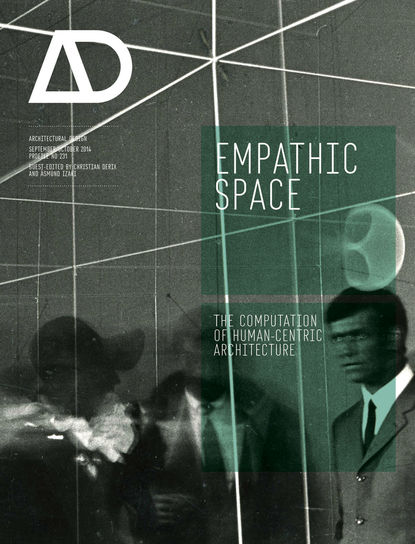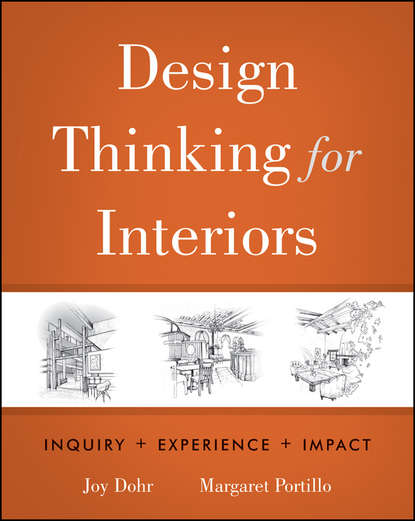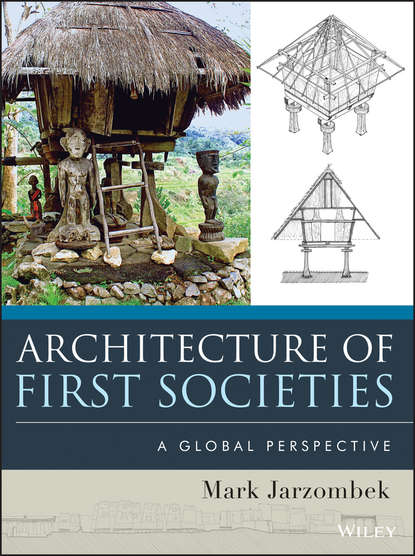Книга "Empathic Space. The Computation of Human-Centric Architecture" затрагивает вопросы пространства в архитектуре и градостроительстве, которые в последние годы приобрели новый импульс в связи с необходимостью адаптации, уплотнения и устойчивого развития. В то время как большинство компьютеризированных подходов к дизайну склонно акцентировать внимание на формальных аспектах архитектуры, упуская из виду пространство и его пользователей, "оригинальные" компьютерные методы проектирования, впервые представленные в Великобритании в 1960-х и 1970-х годах, были сфокусированы на поведенческих и профессиональных шаблонах. За последнее десятилетие появилось новое поколение исследований в области дизайна, которое начало внедрять и подтверждать предыдущие исследования в области пространственных вычислений, стремясь понять, как проектировать пространственные конфигурации на основе опыта пользователей. Это возрождает интерес к опытному подходу, который впервые был исследован в начале 20-го века немецкими и скандинавскими органическими архитекторами, которые изобрели методы проектирования, соотносящие когнитивные ответы зданий на пространственную структуру. Однако текущее возрождение человеко-центрического дизайна представляет собой первый подход к проектированию, который синтезирует пространственный дизайн и алгоритмические техники с органическим мышлением, что можно рассматривать как возвращение к "первоначальным принципам" архитектурного проектирования. В книге принимают участие такие авторы, как Пол Коутс, Кристиан Дерикс, Олафур Элиассон, Люси Хелме, Билл Хиллиер, Асмунд Изаки, Пратхана Джаганнат, Дэн Монтелло, Юхани Палласмаа, Филип Стедман и Гай Тероулаз. Среди приведенных примеров архитекторов и дизайнеров - Юсси Ангеслевя (Art+Com), Стэн Аллен, Aedas|R&D, Маркус Браах (Kaisersrot), Герман Херцбергер, Кадзухиро Кодзима (Cat), Пабло Миранда и Рафи Сегал.
In recent years, there has been a revival in questions about space in architecture and town planning, with adaptation, density and sustainable regeneration becoming ever more important. Most computer-aided design endeavours tend to focus mostly upon the architectural form, neglecting space and its inhabitants; by contrast, the "original" computational design practices, pioneered in Britain in the 60s/70s, were concerned with behaviour and activity patterns. In the past decade a new wave of design thinkers has emerged, embedding the computational strategies developed in previous research, on attempting to understand how we might design spatiotemporal configurations based upon user experience. As with previous explorations, it may be seen as a reaction to earlier 20th-century design methods, by Germanic and Scandinavian organicists, who applied experimental methods using building occupancy to correlate cognitive responses to space. However, this newer human-centred paradigm is the first approach to marry spatial design strategies with algorithmic processes through integrating organic aesthetics, perhaps representing a resurgence of the original principles of architectural construction.The subjects discuss are Paul Coates Ingé en Architecte, Christian Der ix Architect Construc orte, Olaf E lsson Argu to, Lucy H mel, Bill H iller, n Isaki Des en , Prarthan Gagannat CAPT, Dan M ntel o, Jhannialla Pa ll ns ot, Carolyn K nter S et al, supoorted by Jussi Ang slev (ArtCom), St llin Art-dde, An (Projec R, MKanasas, Hermann H zb ererit , Kazu hira K jima (ja), Pa bo Mi nda and Ra sega l.
Электронная Книга «Empathic Space. The Computation of Human-Centric Architecture» написана автором Christian Derix в году.
Минимальный возраст читателя: 0
Язык: Английский
ISBN: 9781119021612
Описание книги от Christian Derix
In recent years, questions of space have gained renewed momentum in architecture and urban design, as adaptation, densification and sustainable regeneration have become an increasing priority. While most computing-based design tends to emphasise the formal aspects of architecture, overlooking space and its users, the ‘original’ computational design approaches first spearheaded in the UK in the 1960s and 1970s tended to be focused on behavioural and occupational patterns. Over the last decade, a new generation of design research has emerged that has started to implement and validate previous investigations into spatial computation, aiming to understand how to design spatial configurations based on user experiences. This revives an interest in the experiential that was first explored in the early 20th century by German and Nordic organic architects, who invented design methods that correlated cognitive responses of buildings' occupants to spatial structure. The current revival of human-centric design, however, represents the first design approach that synthesises spatial design and algorithmic techniques with organic design thinking, which could also be regarded as a return to the ‘first principles' of architectural design. Contributors include: Paul Coates, Christian Derix, Olafur Eliasson, Lucy Helme, Bill Hillier, Åsmund Izaki, Prarthana Jagannath, Dan Montello, Juhani Pallasmaa, Philip Steadman and Guy Theraulaz. Featured Architects/Designers: Jussi Ängeslevä (Art+Com), Stan Allen, Aedas|R&D, Markus Braach (Kaisersrot), Hermann Hertzberger, Kazuhiro Kojima (Cat), Pablo Miranda and Rafi Segal.



















